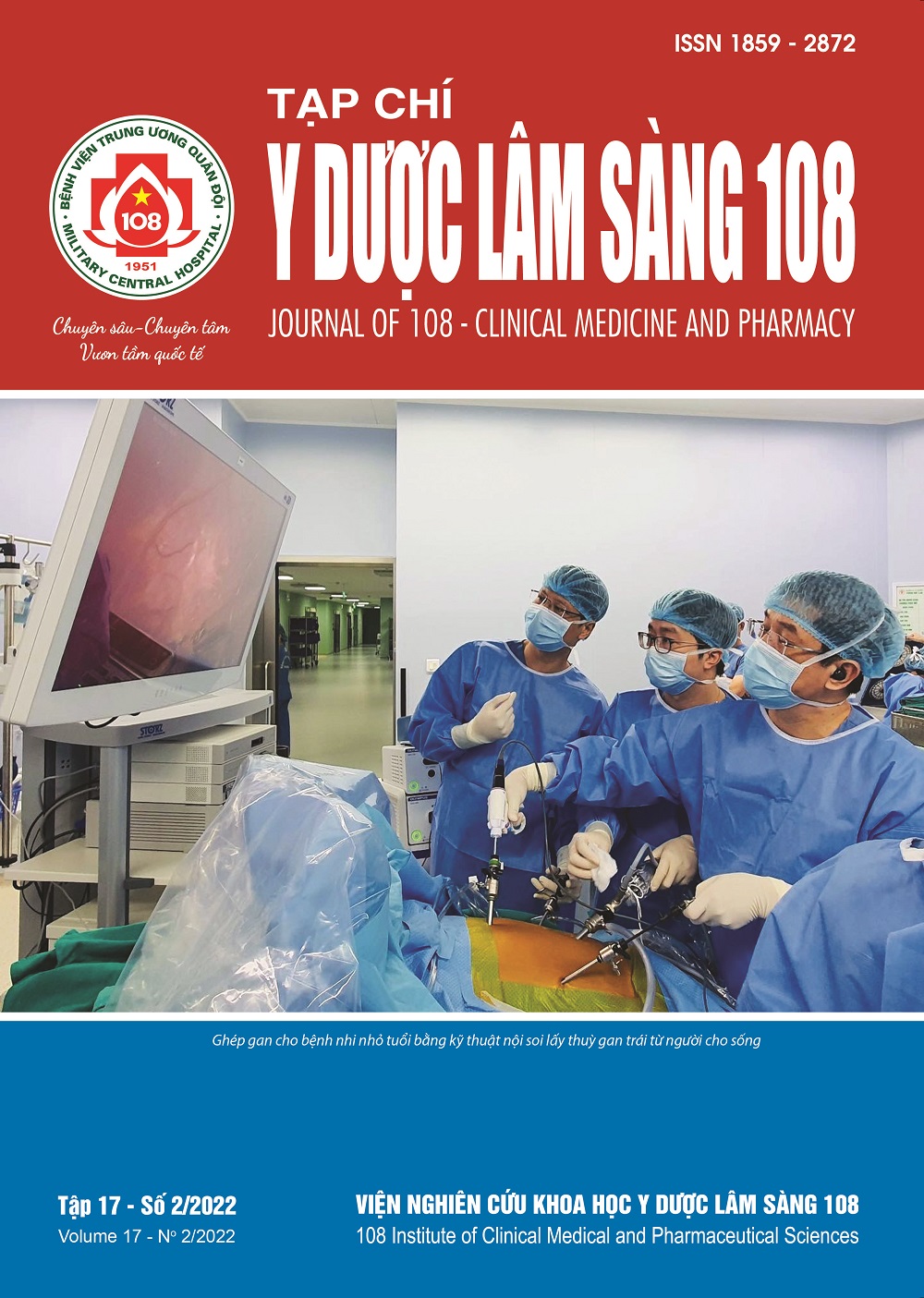Association of IL36RN and CARD14 mutations with some laboratory findings in patients with pustular psoriasis in Vietnam
Main Article Content
Keywords
Abstract
Objective: To investigate the relationship between IL36RN and CARD14 gene mutations with some laboratory findings of pustular psoriasis. Subject and method: A descriptive cross-sectional study on 64 patients with pustular psoriasis at Ho Chi Minh City (HCMC) Dermatology Hospital and Hanoi Central Institute of Dermatology. Blood samples were collected for laboratory testing: White blood cells, CRP, serum albumin. Then other blood samples (2ml) were taken to conduct sequencing at the Center for Molecular Biomedicine, University of Medicine and Pharmacy at HCMC to identify mutations in the IL36RN and CARD14 genes. Result: The rate of leukocytosis ≥ 15.000/mm3 was significantly higher in patients with the c.1641C>T variation of the CARD14 gene. The incidence of hypoalbuminemia < 3.8g/dL was meaningly lower in patients with the c.1753G>A variant of the CARD14 gene. Conclusion: Mutations of CARD14 gene were associated with some laboratory changes of pustular psoriasis such as: Leukocytosis ≥ 15.000/mm3, hypoalbuminemia < 3.8g/dL.
Article Details
References
2. Navarini AA, Burden AD, Capon F et al (2017) European consensus statement on phenotypes of pustular psoriasis. J Eur Acad Dermatol Venereol 31(11): 1792-1799.
3. Sugiura K (2014) The genetic background of generalized pustular psoriasis: IL36RN mutations and CARD14 gain-of-function variants. Journal of dermatological science 74(3): 187-192.
4. Sugiura K, Oiso N, Linuma S et al (2016) IL36RN mutations underlie impetigo herpetiformis and CARD14 c. 526G>C is a risk factor for pustular psoriasis with psoriasis vulgaris. Journal of Dermatological Science 84(1): 4.
5. Tauber M, Bal E, Pei XY et al (2016) IL36RN mutations affect protein expression and function: A basis for genotype-phenotype correlation in pustular diseases. J Invest Dermatol 136(9): 1811-1819.
6. Wang Y, Cheng R, Lu Z et al (2017) Clinical profiles of pediatric patients with GPP alone and with different IL36RN genotypes. J Dermatol Sci 85(3): 235-240.
7. Zhu T, Jin H, Shu D et al (2018) Association of IL36RN mutations with clinical features, therapeutic response to acitretin, and frequency of recurrence in patients with generalized pustular psoriasis. Eur J Dermatol 28(2): 217-224.
 ISSN: 1859 - 2872
ISSN: 1859 - 2872
